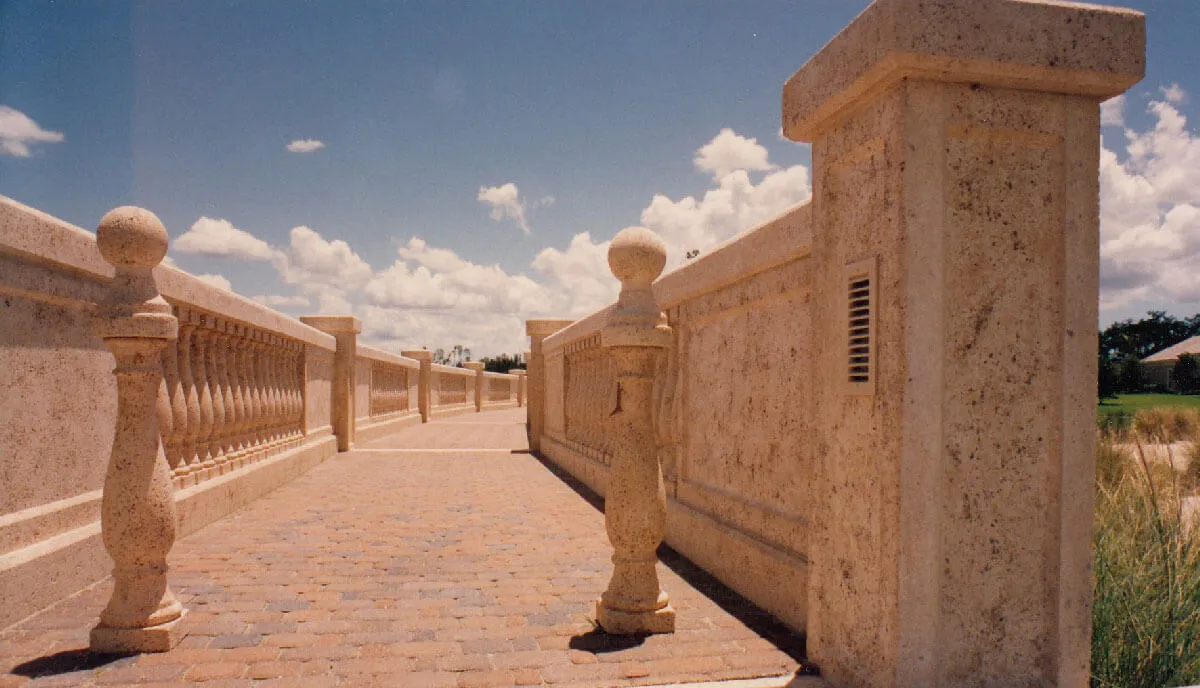Precast concrete is revolutionizing the way architects, builders, and project managers approach construction—especially in environments where quality, consistency, and speed matter. But what are the components of precast concrete that give it such impressive performance across commercial, civic, resort, and residential developments? This guide explores the essential ingredients, production process, and the most popular precast concrete products used in architectural and structural applications.
Understanding the Key Components of Precast Concrete
To understand the components of precast, it’s important to know how the material is made. Unlike traditional concrete that’s poured and cured on-site, precast elements are manufactured in controlled facilities using precisely measured materials. This results in consistent appearance, strength, and durability—ideal for long-lasting structures.
1. Aggregates
Making up 60–75% of the mix, aggregates (gravel, sand, crushed stone) provide structural strength and density. Their size, texture, and type are selected based on the intended use of the precast concrete structural systems.
2. Cement
Cement acts as the binding agent that holds aggregates together. Depending on the project, mixes may use Ordinary Portland Cement or specialized cements (e.g., sulfate-resistant or high-early-strength).
3. Water
Water initiates the chemical reaction (hydration) needed for the cement to harden. Using the correct ratio is essential for achieving optimal strength and reducing porosity.
4. Additives & Admixtures
These modifiers enhance performance. Common types include:
- Water reducers (for improved flow without excess water)
- Air-entraining agents (for freeze-thaw protection)
- Accelerators and retarders (to adjust setting time)
- Plasticizers (for strength and durability)
Together, these form the complete components of precast concrete that builders rely on for speed, reliability, and performance.
Popular Precast Concrete Products and Their Applications
Precast concrete products are found in nearly every sector—from high-rises and stadiums to pedestrian bridges and seawalls. Here are some popular precast products used by architects and engineers:
Precast Structural Beams & Columns
These precast elements form the skeleton of commercial and civic structures, offering load-bearing capacity and rapid installation with reduced onsite labor.
Precast Concrete Slabs
So, what is a precast concrete slab? It’s a factory-made horizontal component used in floors, ceilings, and rooftops. These slabs reduce formwork and curing time at the job site.
Precast Wall Panels
Ideal for both structural and aesthetic purposes, architectural precast panels can be solid, insulated, or decorative, depending on project needs.
Precast Stairs and Retaining Walls
These elements are manufactured for exact fit, quick assembly, and uniform appearance. Their factory production eliminates variability common in cast-in-place work.
Advantages of Precast Concrete in Modern Projects
Precast concrete isn’t just a trend—it’s a strategic choice for projects that require faster schedules, lower maintenance, and superior results. Here are some key advantages of precast concrete:
Enhanced Quality Control
Manufacturing in a plant-controlled setting ensures better dimensional accuracy, finish, and performance across all precast elements.
Faster Timelines
Simultaneous offsite manufacturing and onsite preparation mean accelerated builds—especially critical in large developments.
Improved Sustainability
Precast production minimizes waste and allows for the integration of recycled materials, reducing the overall environmental footprint.
Durable Results
The precast concrete advantage lies in its durability—resistant to moisture, impact, and weather extremes. Fewer repairs mean reduced long-term costs.
These advantages of using precast concrete make it a preferred material across a wide range of architectural applications.
Challenges and Considerations
Despite the benefits, precast comes with its considerations. These include higher upfront costs, limited onsite flexibility, and the need for careful transportation and handling. However, with a knowledgeable manufacturer, these issues can be effectively managed.
Frequently Asked Questions
Q1: What is precast concrete?
A1: Precast concrete is made in a controlled facility, poured into reusable molds, cured, and shipped to the construction site ready for installation.
Q2: What are the components of precast?
A2: The core components of precast concrete include aggregates, cement, water, and chemical admixtures—all mixed with precision for durability and performance.
Q3: Why use precast instead of cast-in-place concrete?
A3: Precast offers superior quality control, reduced build times, and fewer site disruptions—ideal for complex or large-scale projects.
Q4: What types of projects benefit from precast?
A4: From parking garages and bridges to resorts and civic centers, precast concrete products are used in a wide variety of structural and architectural applications.
Q5: Is precast more sustainable?
A5: Yes. Precast minimizes material waste, supports the use of recycled content, and often leads to lower life cycle emissions due to durability.
Why Architects Choose DC Kerckhoff for Precast Concrete Products
When quality, customization, and reliability matter, professionals turn to DC Kerckhoff Company, a trusted name among architectural precast concrete manufacturers for over 40 years. We produce high-end precast concrete products used in landmark projects across the U.S. and Caribbean—spanning resorts, government buildings, mixed-use communities, and luxury residences.
Our clients’ value:
- APA-certified quality in every batch
- Custom textures, colors, and finishes
- Precision manufacturing and expert logistics
- End-to-end collaboration with your design/build team
Whether you need columns, treads, slabs, or complete precast concrete structural systems, we deliver form and function—on time and on budget. Contact us today at (239) 597-7218 to discuss your next project and get expert advice on the best precast solutions for your architectural vision.
Sign up to get unlimited and immediate technical documents, requests for quotes, and helpful support from our experienced team.
Sign up
